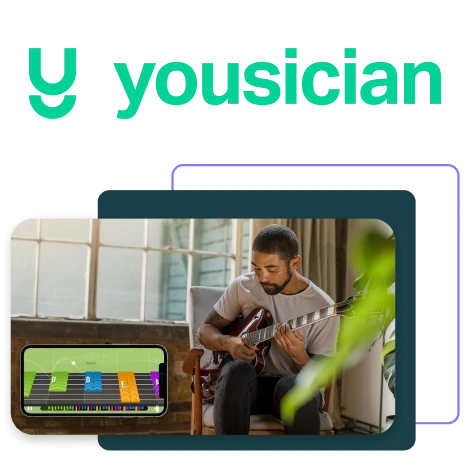Customer Snapshot
- Industry: E-Learning / Music Education
- Company size: 51–200 employees
- Location: Helsinki, Finland
- Website: yousician.com
- Product used: Unleash Enterprise
At a Glance
- 20+ million monthly active users across the Yousician platform
- Ran 600+ full-stack A/B tests across apps and backend services
- Created 516 feature flags, with only 28 for operations
- Enabled real-time, server-side experiment targeting
- Delivered consistent user experiences across iOS, Android, macOS, Windows, and web
- Embedded a culture of data-driven decision making
Top Challenges
Yousician is the world’s leading music learning platform, with more than 25 million monthly active users. Running on AWS for resiliency and scale, every new feature release is A/B tested — but their early experimentation tools couldn’t keep up with the scale and complexity required.
- Experiments were inconsistent across devices and platforms.
- “Sticky” targeting often placed the wrong users into tests, reducing trust in results.
- Built-in analytics forced reliance on third-party systems, rather than Yousician’s own data warehouse.
- Teams needed to measure success on business metrics like custom lifetime value, not just app opens.
“The most frequent question I got at the time was: why do I have the wrong users in my experiment?”
— Adam Kapos, Lead Architect at Yousician
Why Unleash
Yousician needed a platform that could:
- Run real-time experiment decisions in their backend
- Keep all data and targeting logic in-house
- Allow data scientists to analyze experiments using the data warehouse
- Ensure consistent targeting across all platforms and devices
- Support complex rollout and stickiness strategies
“The reason we chose Unleash was that we wanted a solution that runs in our back end in real time, while our data scientists analyze results in our data warehouse.” — Adam Kapos, Lead Architect at Yousician
Why AWS
Yousician leverages a sophisticated, high-scale AWS architecture to serve millions of learners. To maintain high availability and developer velocity, they required a feature management solution that lived natively within their AWS environment.
-
Scalable Compute: Yousician runs its backend on Amazon Elastic Kubernetes Service (EKS) and leverages AWS Lambda for high-scale, serverless functions. During peak traffic, the environment scales to over 300 Amazon EC2 instances.
-
Content Delivery: By using Amazon S3 and Amazon CloudFront for static content, Yousician ensures low-latency delivery of songs and video lessons for Guitar, Bass, Piano, Ukele and Voice.
-
Generative AI: Using Amazon SageMaker, Yousician builds and deploys custom AI models that power their platform, providing real-time feedback to students across 5 different instruments. The team leverages Amazon Bedrock to integrate third-party foundational models, accelerating the development of new, interactive learning features.
-
Real-Time Data Analytics: Yousician utilizes Amazon Kinesis to ingest and process massive streams of analytics data from 25 million monthly active users.
-
Resilience: Running Unleash within their AWS backend ensures that feature evaluation happens locally via the Python SDK, eliminating external API dependencies and maintaining the high-performance standards of their AWS stack.
The Benefits of Unleash
- Full-Stack Experimentation: Unleash powers experiments across frontend and backend.
- Custom Stickiness: Targeting by account, device, or other attributes ensures consistent experiences.
- Flexible Rollouts: Engineers can define and reuse custom rollout strategies.
- Developer Velocity: Teams merge to main early and often, avoiding long-lived branches.
- Platform Consistency: Unified A/B testing across mobile apps and web services.
“To me, Unleash is the engineer’s best friend, because it lets us deliver the right feature or experiment to the right user at the right time — whether that’s targeting by device, account, or any other attribute that matters.” — Adam Kapos, Lead Architect at Yousician
Business Outcomes
- 516 feature flags created (only 28 operational, the rest for experimentation)
- 600+ experiments run — from audio drivers to subscription flows
- Consistent user experience across all devices and platforms
- Custom business metrics like LTV now drive experiment evaluation
- Faster releases with feature flags embedded in development workflow
- Culture shift toward data-driven decision making
“Basic A/B testing of button colors is simple — it all happens on the front end. But we wanted to go deeper…Unleash makes it possible to run true full-stack experiments with data from any source.” — Adam Kapos, Lead Architect at Yousician
Conclusion
By adopting Unleash, Yousician transformed its experimentation practice from simple UI tests to full-stack experimentation. With server-side targeting, custom stickiness, and the ability to measure success using their own data warehouse, Yousician delivers new features faster, more consistently, and with greater confidence.
